
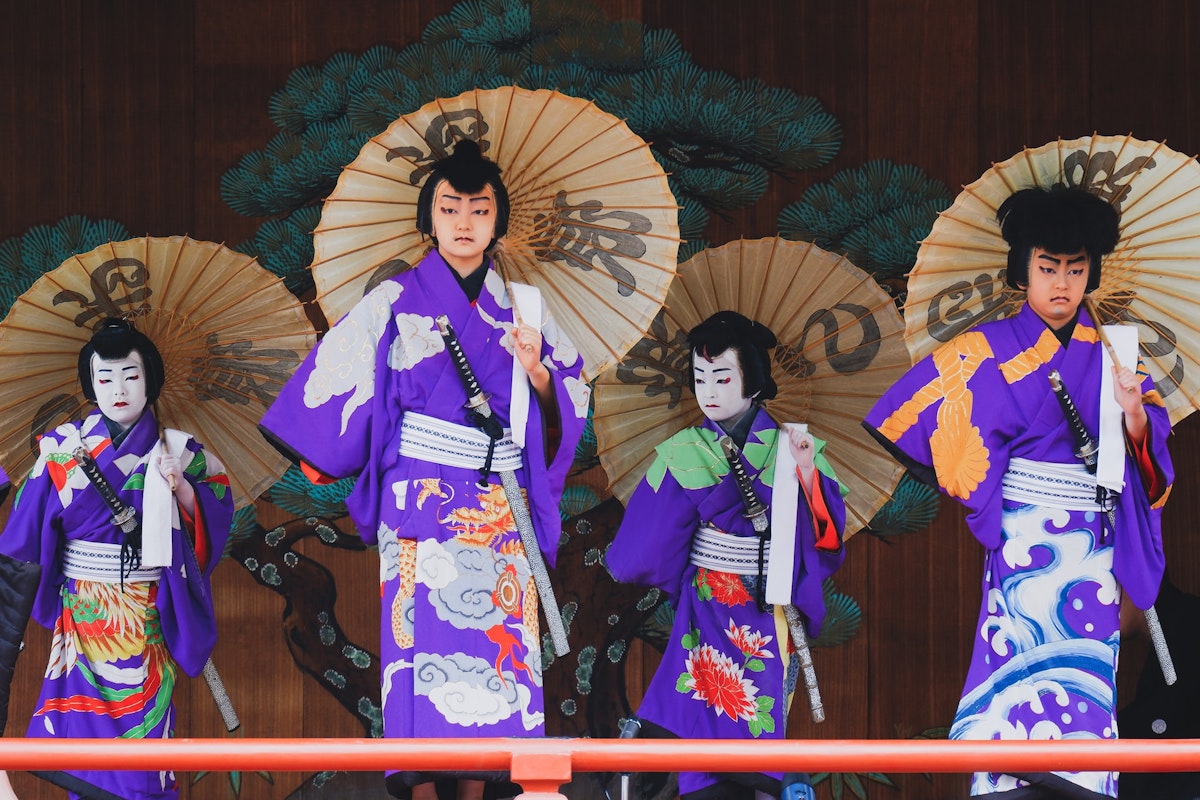
Kabuki, a traditional Japanese theater form is an amalgamation of drama, dance, and music. It offers a vibrant spectacle that has not only entertained but also mirrored the society and culture of Japan for centuries. The word "Kabuki" itself means "out of the ordinary" and it's a fitting description of this unique and captivating theatrical tradition. From its elaborate costumes and makeup to its dynamic performances on revolving stages, Kabuki is truly a feast for the senses.
Despite its rich history and cultural significance, Kabuki remains a mystery to many outside of Japan. This art form, recognized by UNESCO as an intangible cultural heritage, is an intricate and fascinating world teeming with symbolism, tradition, and innovation. It's a testament to the enduring appeal of storytelling and the power of performance.
Whether you're a seasoned theater enthusiast or a curious newcomer, delving into Kabuki can offer a fresh perspective on the dramatic arts. So, let's pull back the curtain and explore 10 fascinating facts about Kabuki Theater.
Kabuki (歌舞伎), a term that translates to "song, dance, and skill," is a classical form of Japanese theater renowned for its dramatic performances blended with traditional dance. Rooted in the 17th-century Edo era, Kabuki began as a novel form of entertainment performed by an all-female troupe.
However, as societal norms shifted, the performance style adapted, leading to men taking over women's roles in what came to be known as "onna Kabuki." This unique element, combined with the actors' exaggerated facial lines and stylized movements, makes Kabuki's style easily recognizable.
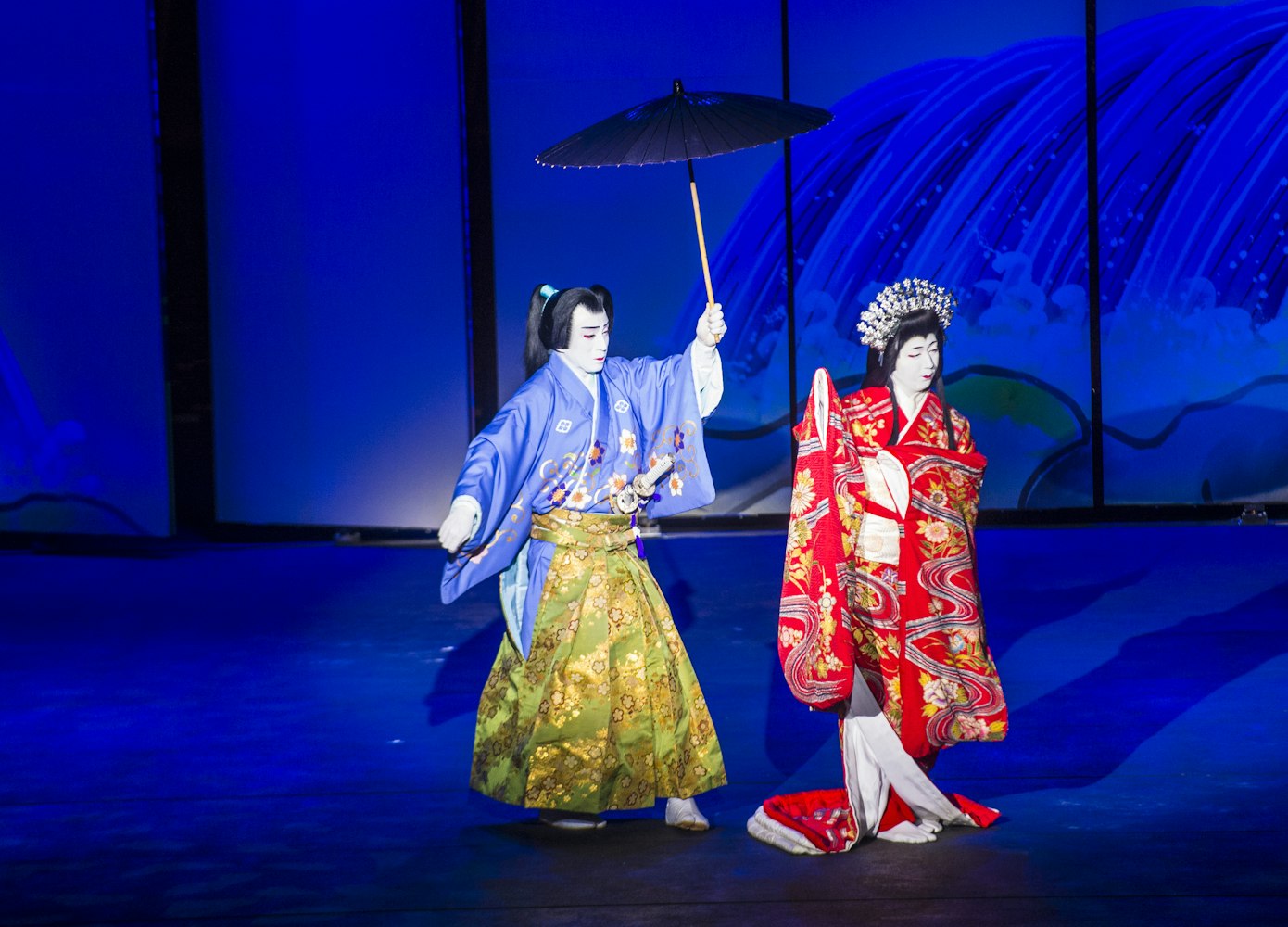
Over four centuries, Kabuki has evolved into a rich blend of music, dance, mime, and spectacular staging and costuming. Its narratives often revolve around historical events, moral conflicts, and love stories, providing insights into Japanese culture and society.
The performances take place in renowned theaters such as the Kabukiza Theater and the National Theatre, each offering a different experience of this captivating art form. Despite the passage of time and the influence of Western cultures, Kabuki has retained its traditional essence while accommodating modern tastes. Today, it stands as one of Japan's great performing arts, reflecting the tastes and customs of its time.
Read More: Top 10 Best Day Trips in Japan You Can't Miss
Kabuki plays a significant role in Japanese culture, serving as a mirror reflecting societal norms, historical events, and popular stories. It is not just a form of entertainment but also a means of cultural expression and preservation. The themes explored in Kabuki plays often resonate with the audience, providing insight into the human condition and societal norms.
The Kabuki theater has been a platform for social commentary, subtly critiquing and challenging societal norms through its narratives. For instance, the tradition of male actors playing female roles, known as "onnagata"challenges conventional gender norms and perceptions.
Kabuki's influence extends beyond the theater, impacting fashion, literature, and visual arts. In recognition of its cultural significance, UNESCO designated Kabuki as an Intangible Cultural Heritage in 2005, further cementing its place in global cultural heritage.
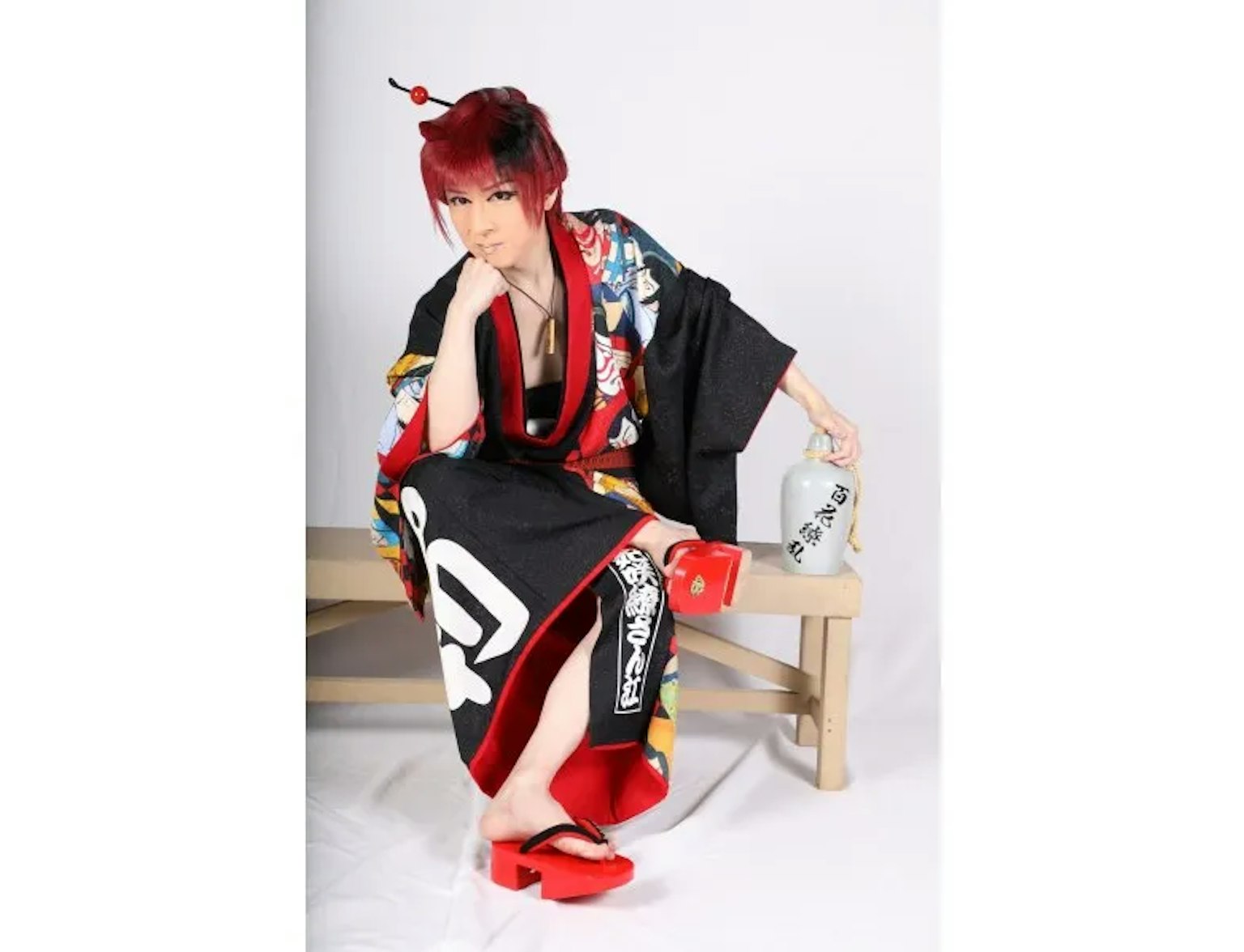
Experience the rich traditions of Japanese theater with this tour.
Kabuki is a classical form of Japanese theater that has mesmerized audiences for centuries with its unique blend of music, dance, mime, and spectacular staging. The art form's distinctiveness lies in its focus on visual spectacle over narrative, with production elements like costumes, lighting, and stage design playing a central role.
One of the most notable features of Kabuki is the existence of 'onnagata', male actors who specialize in female roles. This tradition, born out of necessity when women were banned from performing in the 17th century, has become one of the defining characteristics of Kabuki.
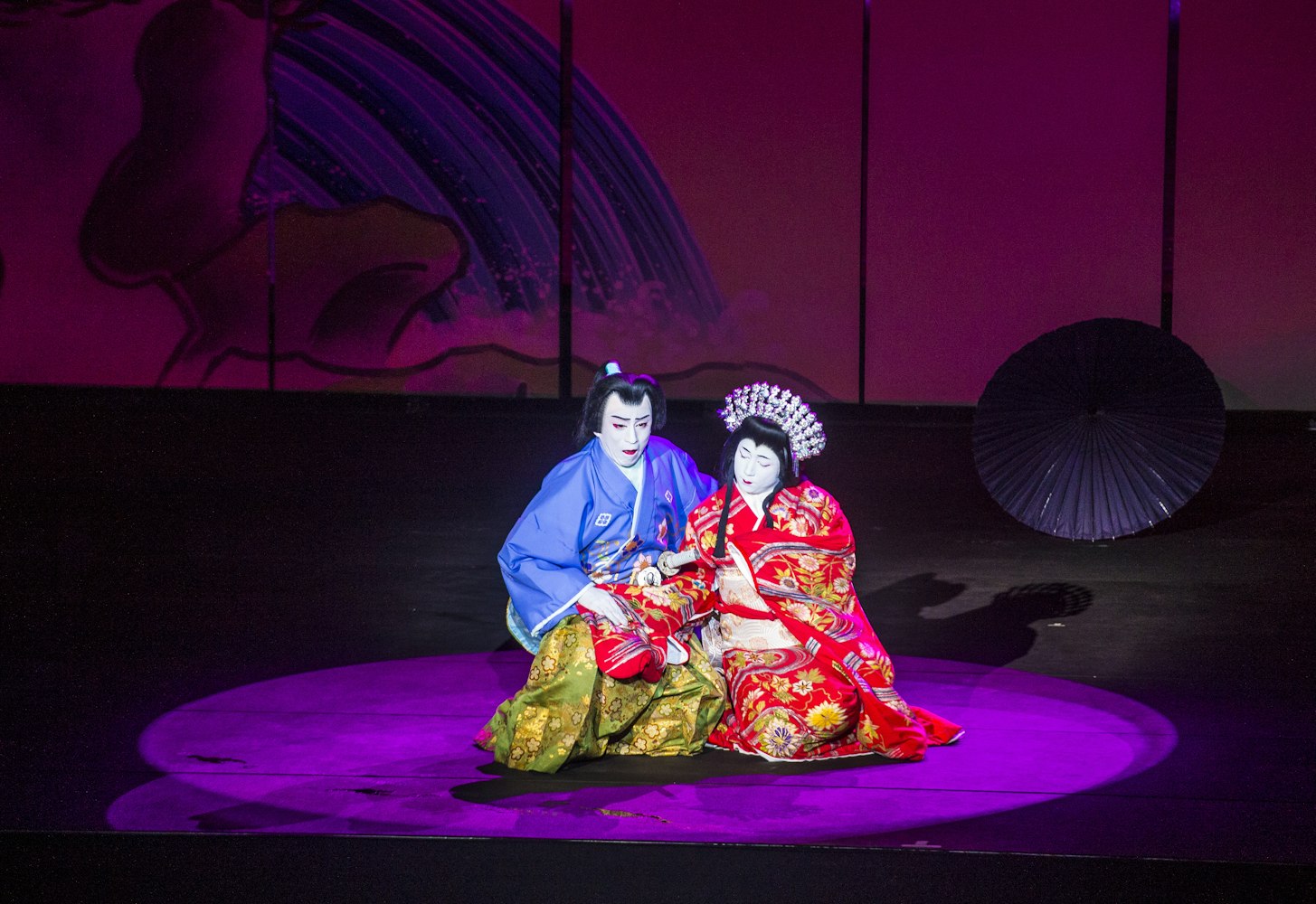
Another unique aspect of Kabuki is the use of live music. Traditional Japanese instruments provide a rich soundscape that accompanies the actors' performances, enhancing the dramatic intensity of the scenes. This emphasis on music sets Kabuki apart from other forms of theater. Furthermore, unlike Western theater where an entire story is usually presented, a Kabuki performance often showcases only part of a story, typically the most exciting or dramatic part.
Costumes and makeup are central to the visual spectacle of Kabuki. The elaborate and highly decorated costumes worn by Kabuki actors are not just aesthetically pleasing but also serve to depict the character's social status, personality, and emotional state. The use of bold colors and intricate designs in these costumes contributes to the dramatic effect of the performances.
Kabuki makeup, known as 'kumadori', is another crucial element of this theater form. The exaggerated facial lines produced by this makeup communicate the nature and emotions of the characters to the audience. It's a visual language that helps tell the story in a more compelling way. White makeup, which is a common feature in Kabuki, is not merely aesthetic but also symbolic, representing purity and moral virtue.
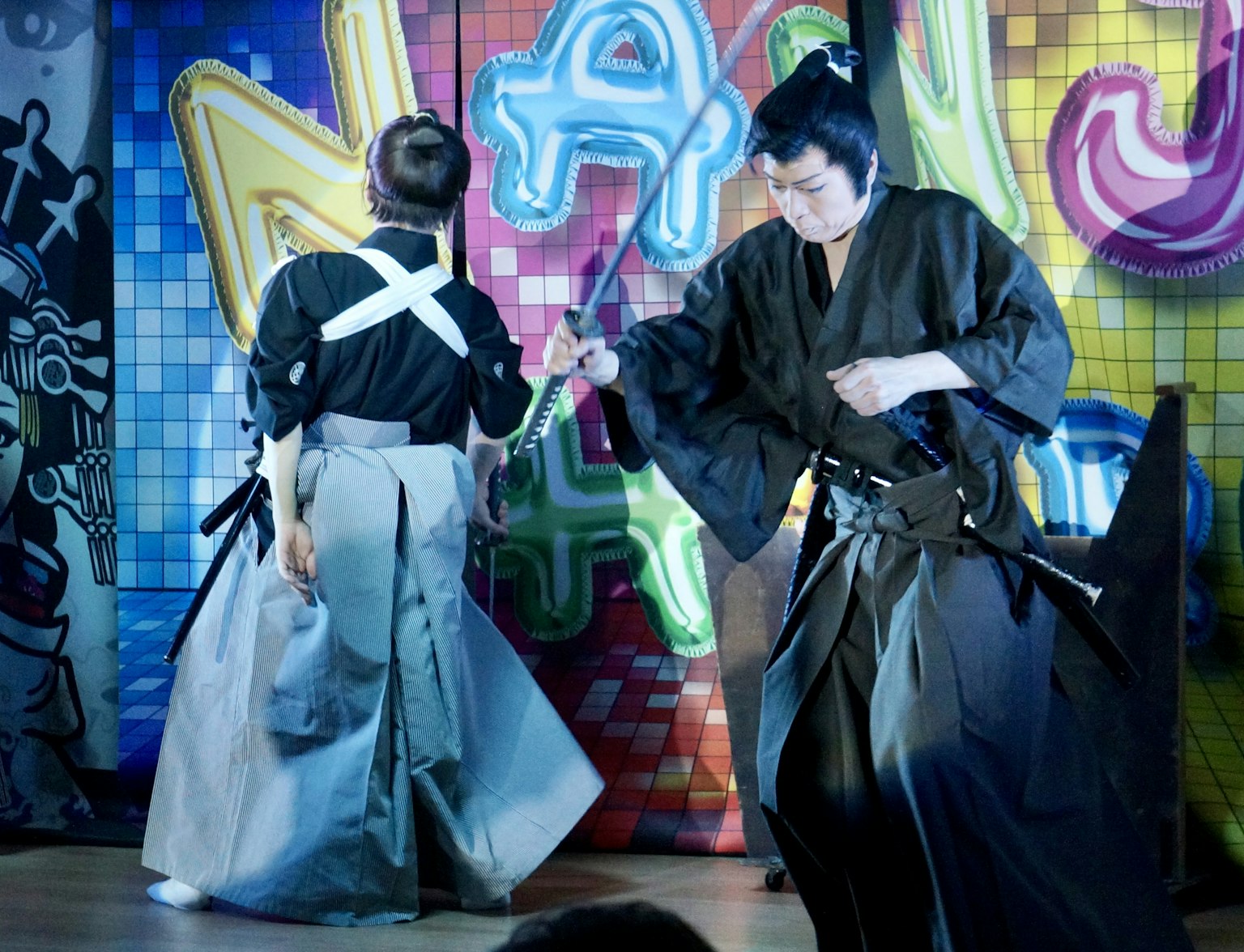
Step into a world of vibrant performances where tradition meets innovation!
The Onnagata, also known as Oyama, are unique to the world of Kabuki theatre. Originating in the 17th century, these are male actors who take on female roles, an intriguing aspect that has been pivotal to the art form since its inception.
The term Onnagata literally translates to "woman's manner", and these actors go beyond just playing a role – they embody the essence of the female characters they portray. This involves not just the physical aspects such as wearing masks and covering their faces with cloth, but also mastering the nuances of feminine behavior and speech.
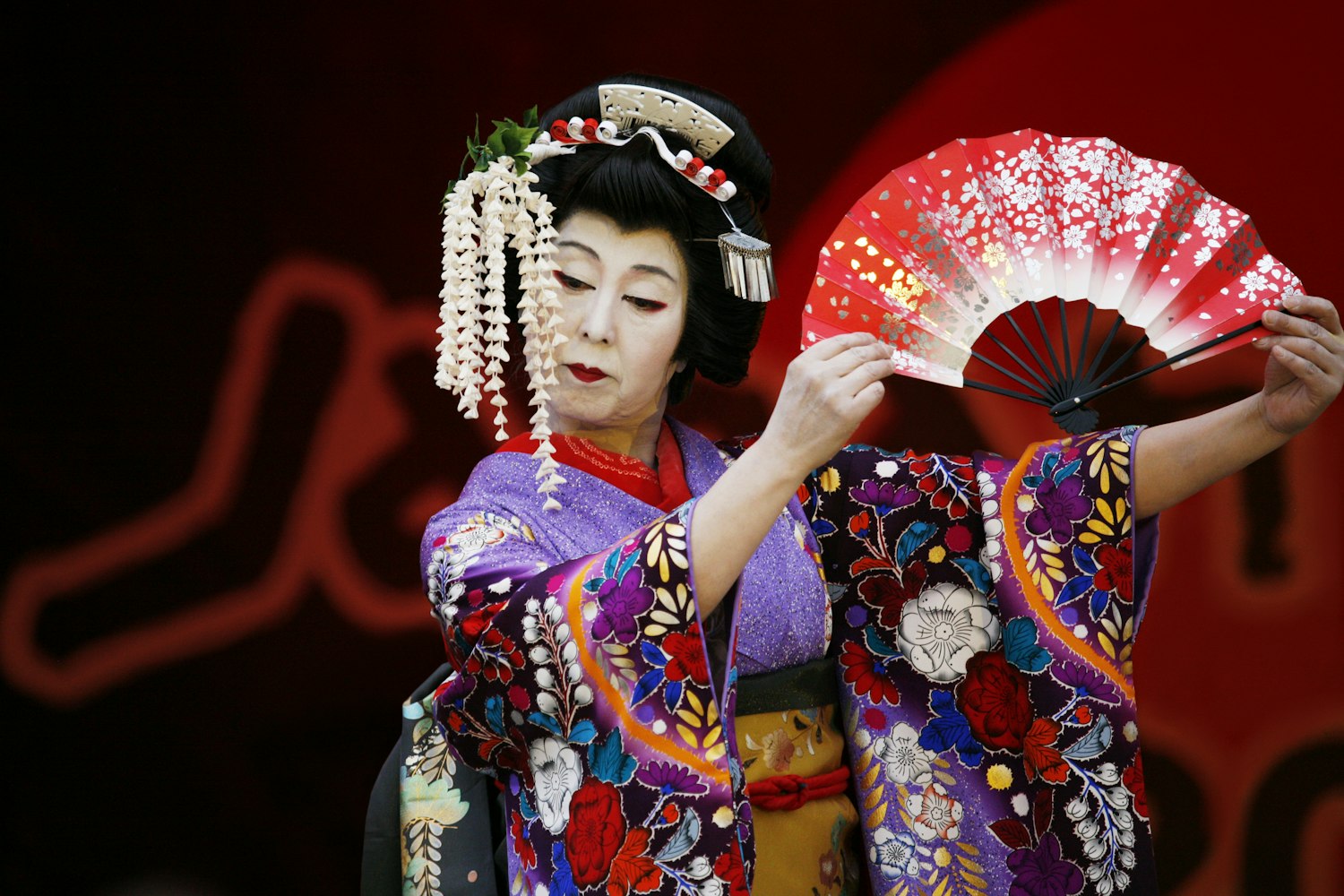
The beauty of Onnagata roles is in their variation – there is a myriad of different patterns that have crystallized over successive generations. These roles are not just about mimicking women but about exploring and portraying the complexities of the female condition in a multifaceted way.
This has led to the Onnagata often being the most popular actors of their day. The Onnagata challenge societal norms and offer a unique perspective on gender roles, making them an integral part of Kabuki theatre's enduring appeal.
'Mie', another distinctive feature of Kabuki, is the art of striking a pose. It is a dramatic technique where an actor holds a pose to emphasize a crucial moment in the performance. The actor freezes for a moment, crosses his eyes, and strikes a pose, capturing the audience's attention and enhancing the emotional intensity of the scene.
The 'mie' is used to highlight significant moments in the plot, such as the climax or turning point of the story. Each pose is carefully choreographed and practiced to perfection, requiring immense skill and control from the actor. The 'mie' is not just a theatrical device but also a form of visual art, adding to the aesthetic richness of Kabuki performances.
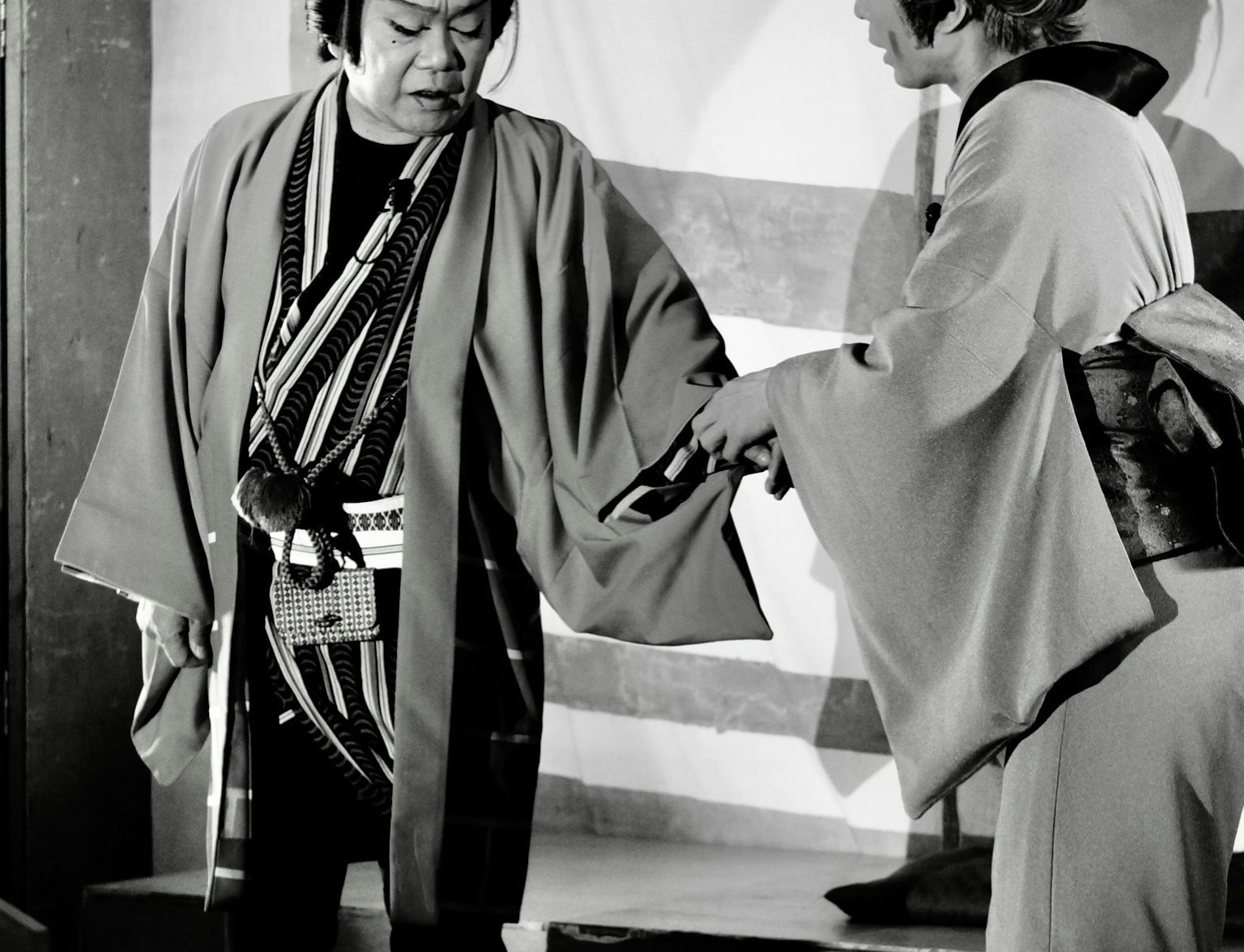
Step into the captivating world of traditional Japanese theater!
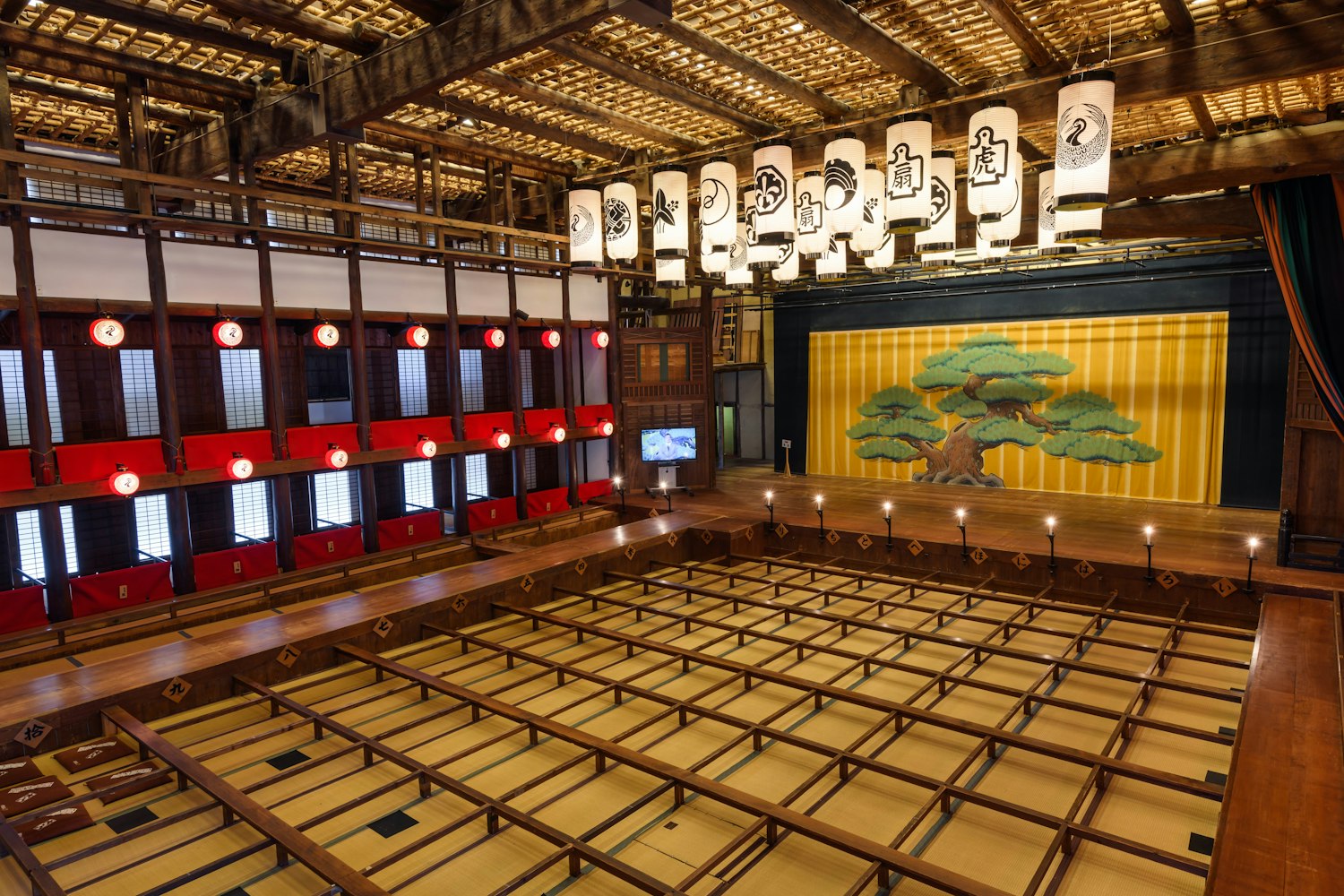
One fascinating fact about Kabuki is that it was founded by a woman named Okuni in the early 17th century. Okuni was a shrine maiden who began performing a new style of dance drama in the dry riverbeds of Kyoto. Her performances were a hit, and soon other troupes started to emulate her style, leading to the birth of Kabuki.
Despite the subsequent ban on women performing in Kabuki, Okuni's influence remains significant. She is remembered not only for her innovative performances but also for breaking gender norms in a male-dominated society. Her legacy continues to inspire Kabuki actors and audiences today.
In a surprising turn of events, Kabuki was once banned by the Japanese government. This happened in the Edo period when the government prohibited women from performing Kabuki due to concerns about public morality. As a result, young boys took over the female roles, but this led to further moral issues, prompting the authorities to ban them as well. This led to the development of 'onnagata', adult male actors specializing in female roles.
The ban did not dampen the popularity of Kabuki; instead, it added to its allure. The 'onnagata' became one of the defining features of Kabuki, contributing to its unique charm and appeal. Despite the challenges, Kabuki has survived and thrived, reflecting its resilience and adaptability.
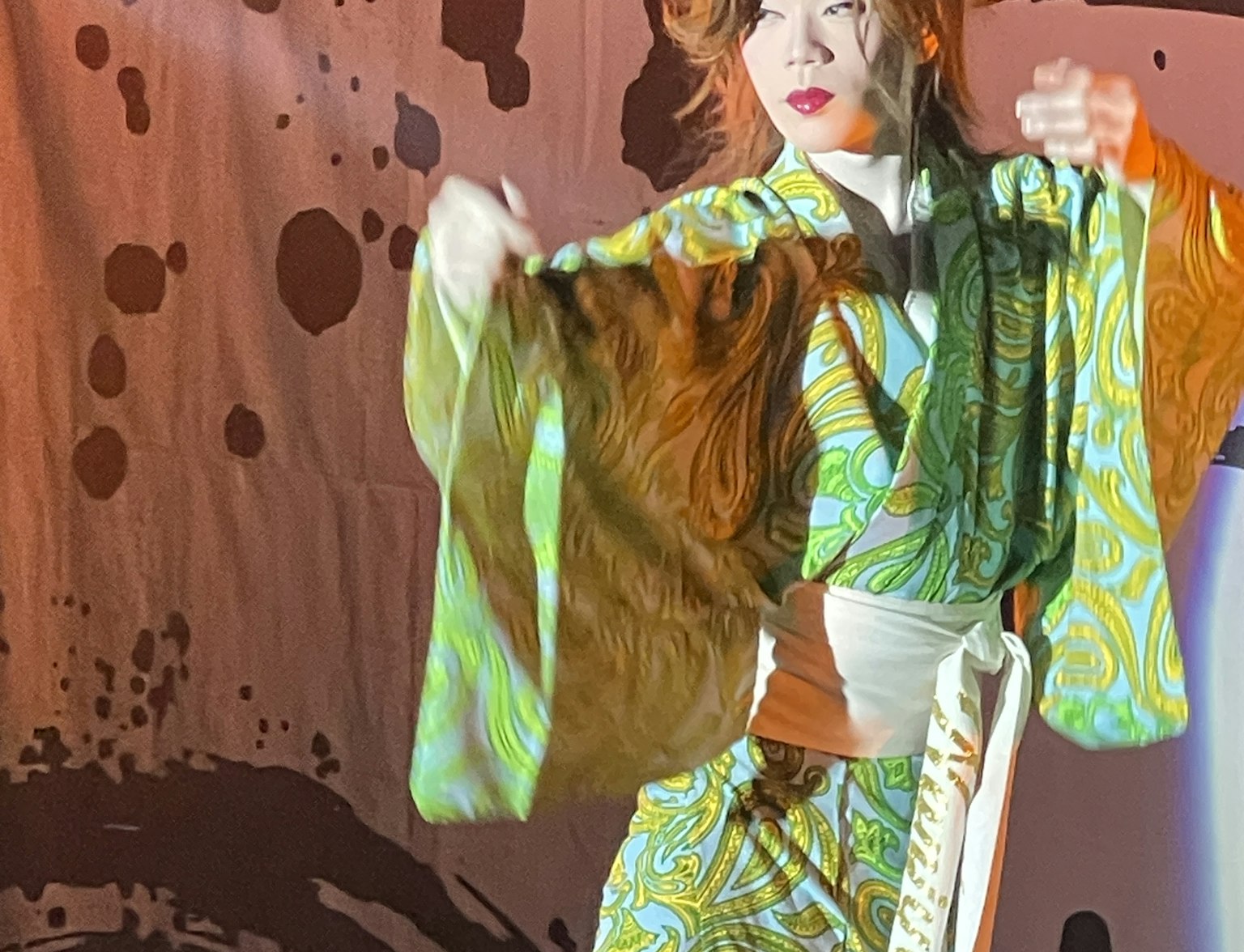
Step into the vibrant world of Japanese dance and culture!
Kabuki theater is also known for its elaborate stage design and mechanics. The most famous theater in Japan, the Kabuki-za, was built in Tokyo in 1889. It was constructed as a Western-style theater, but the interior decorations were distinctly Japanese.
The Kabuki stage is equipped with several mechanical devices, such as revolving stages and trapdoors, which allow for quick scene changes and dramatic entrances and exits. The 'hanamachi', a runway that extends into the audience, is another distinctive feature of the Kabuki stages. These elements enhance the visual spectacle of Kabuki performances, adding to their excitement and drama.
Interestingly, Kabuki scripts are never officially published. This tradition dates back to the Edo period when plays were passed down orally from generation to generation. Even today, actors learn their lines and cues through rigorous training and practice rather than from a written script.
This practice reflects the importance of tradition in Kabuki and the emphasis on performance over text. It allows for flexibility and improvisation, enabling actors to bring their own interpretation and creativity to their roles. This is one of the reasons why no two Kabuki performances are ever exactly the same, adding to the art form's dynamism and vitality.
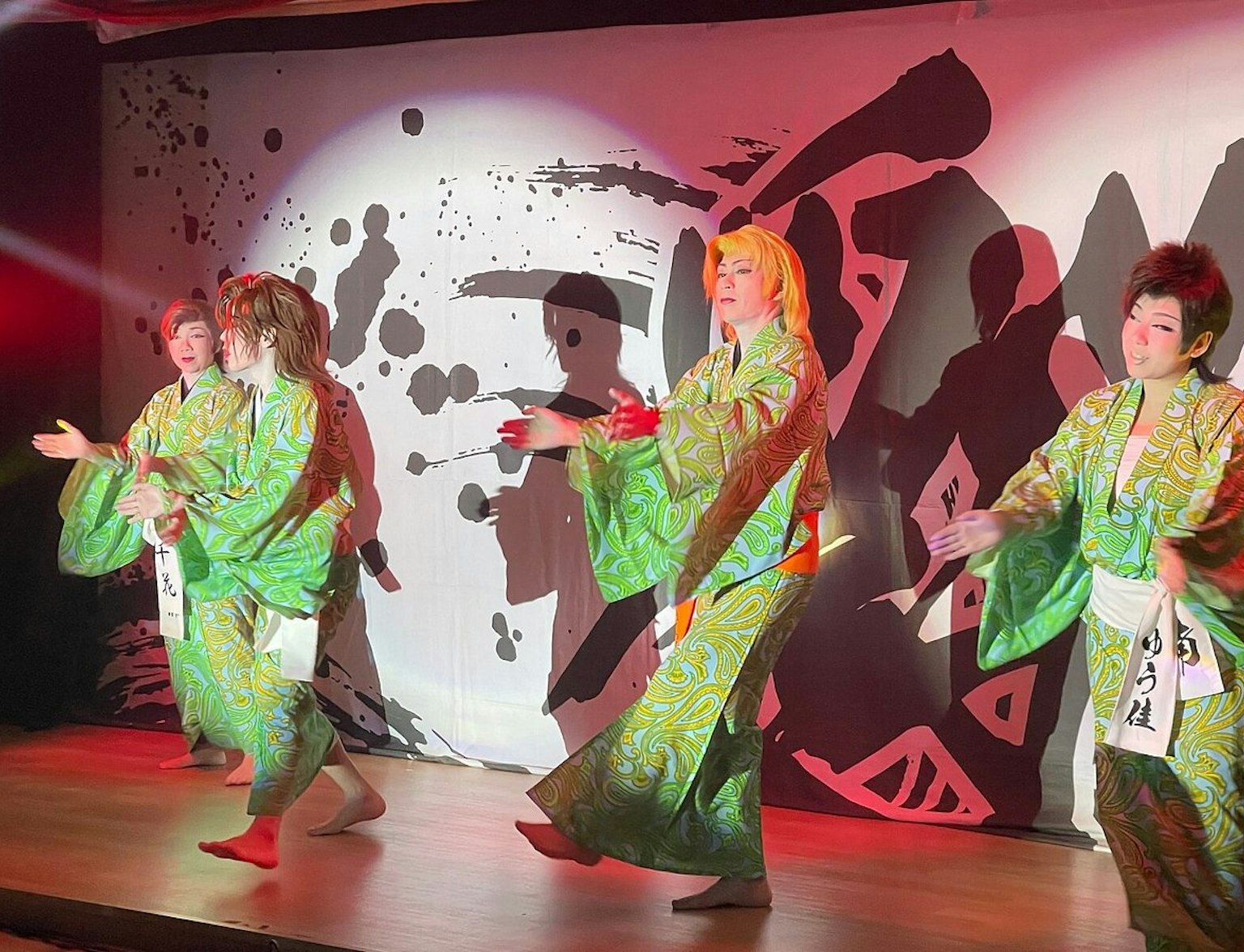
Step into the mesmerizing world of Nikko Momijiza's Mini Dance Show!
Kabuki plays fall into three main categories: Jidaimono, Sewamono, and Shosagoto. Jidaimono, or historical plays, often depict famous events from Japanese history and are known for their grand settings and elaborate costumes. These plays often revolve around themes such as loyalty and honor, reflecting the values of the samurai class.
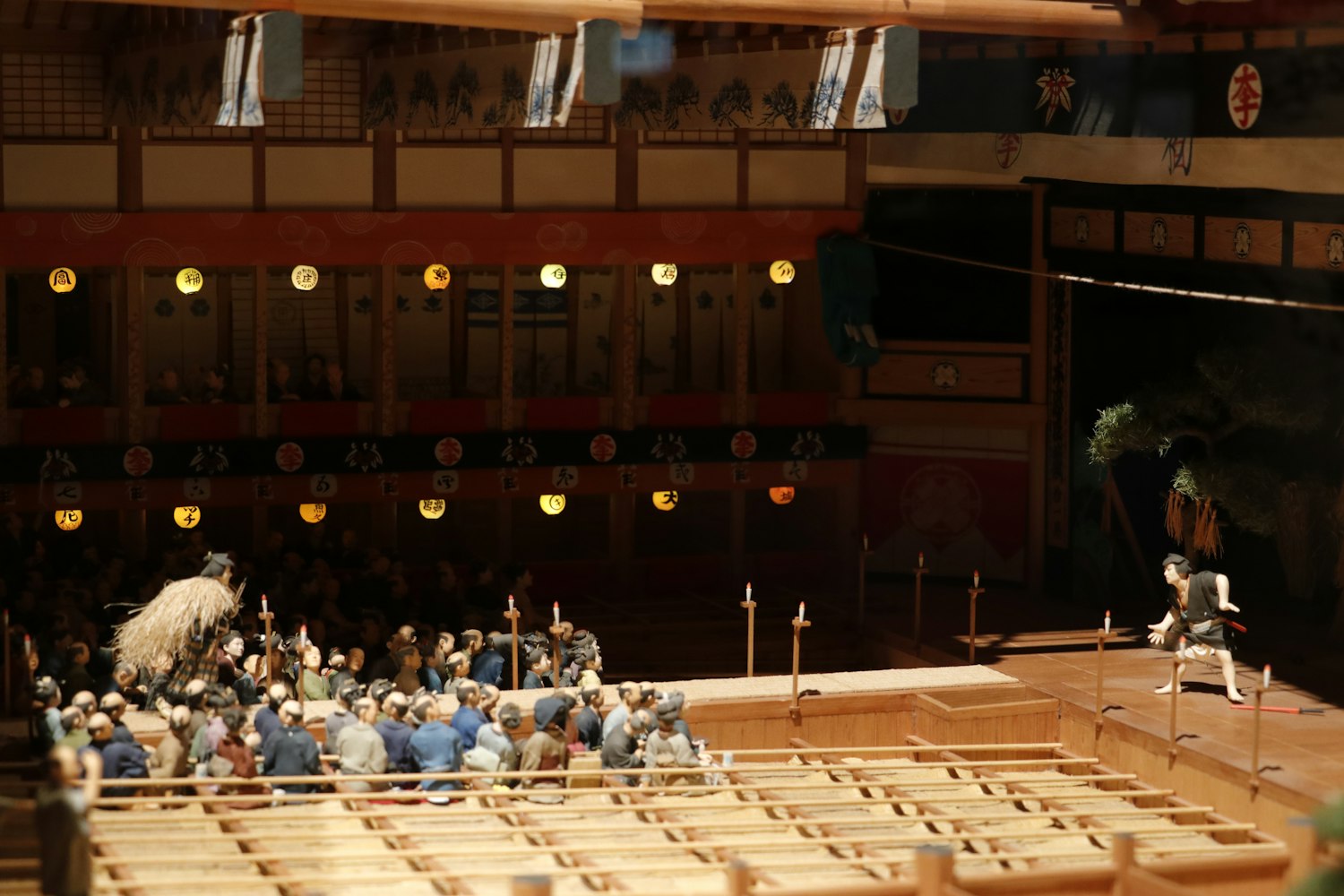
Sewamono, or domestic plays, contrast with Jidaimono by focusing on commoners' lives in the Edo period. They often explore societal issues and human emotions, providing a glimpse into the lives of everyday people in historical Japan. Shosagoto, or dance dramas, are characterized by their emphasis on dance and movement. They often feature stylized choreography accompanied by traditional Japanese music, showcasing the actors' physical skill and expressiveness.
The Hanamichi, a unique feature in Kabuki theater, is a runway that extends from the stage to the back of the theater, passing through the audience. This allows the actors to make dramatic entrances and exits, and it also brings them closer to the audience, enhancing the immersive experience of the performance.
The Hanamichi is not just a pathway; it's a crucial part of the staging and storytelling in Kabuki. It's often used to represent different locations, such as a river or road, and its use can add depth and complexity to the narrative. The Hanamichi is a prime example of how Kabuki combines visual spectacle with dramatic storytelling.
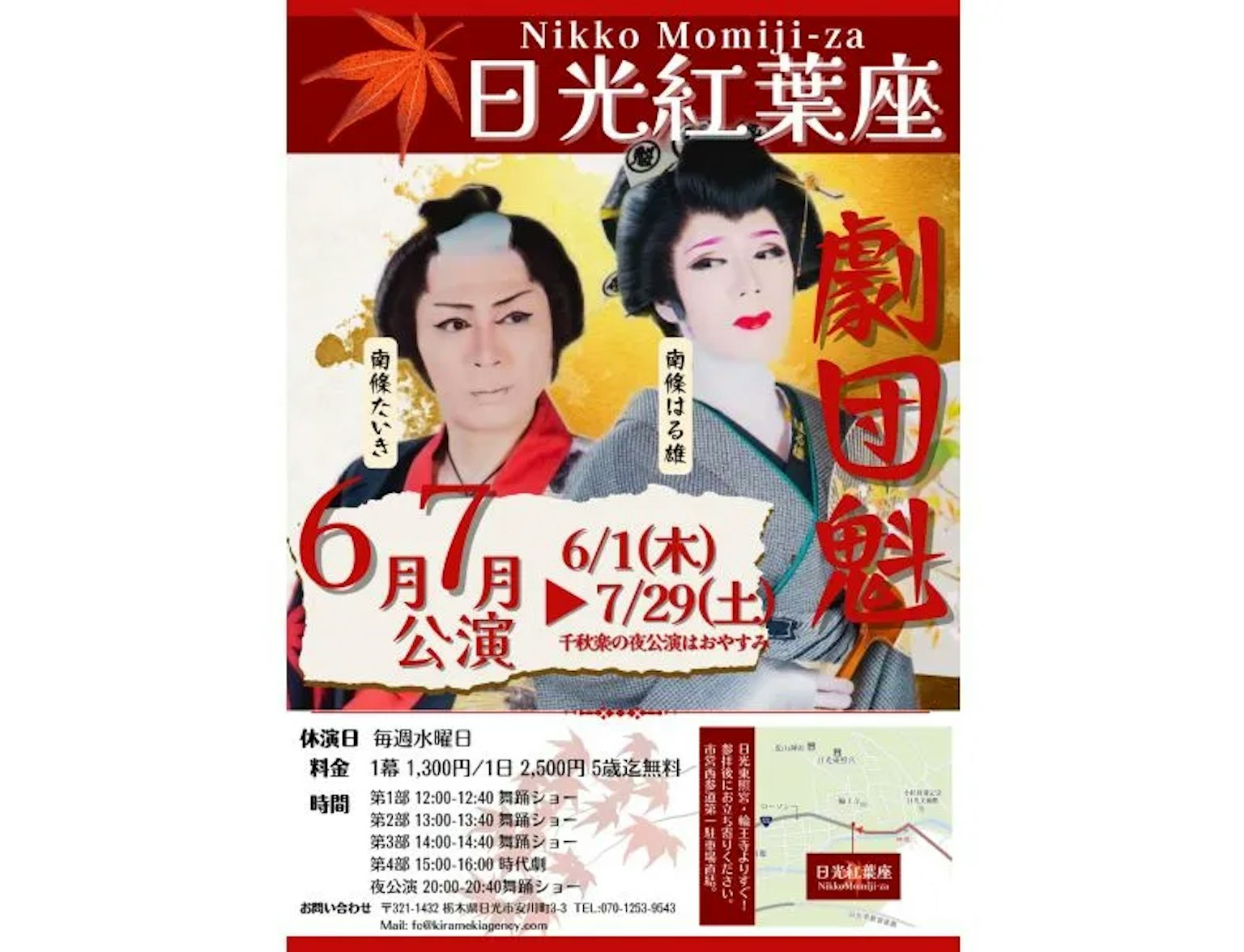
Experience the excitement and drama of traditional Japanese theatre with our tour to Nikko Koyoza!
In Kabuki, the chorus plays a significant role in narrating the story and expressing the characters' inner thoughts and emotions. The chorus members sit offstage and deliver their lines in unison, adding a layer of musicality and rhythm to the performance.
The chorus's role is not just to provide narration but also to enhance the emotional impact of the scenes. Their voices can create a sense of tension, excitement, or sadness, complementing the actors' performances and helping to bring the story to life. The Kabuki chorus is a testament to the art form's collaborative nature, where every element works together to create a captivating theatrical experience.
Kabuki makeup, known as 'kumadori', is more than just a way to make the actors look dramatic. It's a form of visual language that communicates the characters' personalities and emotional states. Different colors represent different traits, with red symbolizing heroism and passion, blue representing villainy or jealousy, and brown indicating supernatural beings.
Kabuki makeup is applied in stylized patterns that exaggerate the actors' facial expressions, enhancing their performances' emotional impact. The makeup also helps the audience identify the characters and understand their motivations, making it an integral part of the Kabuki experience.
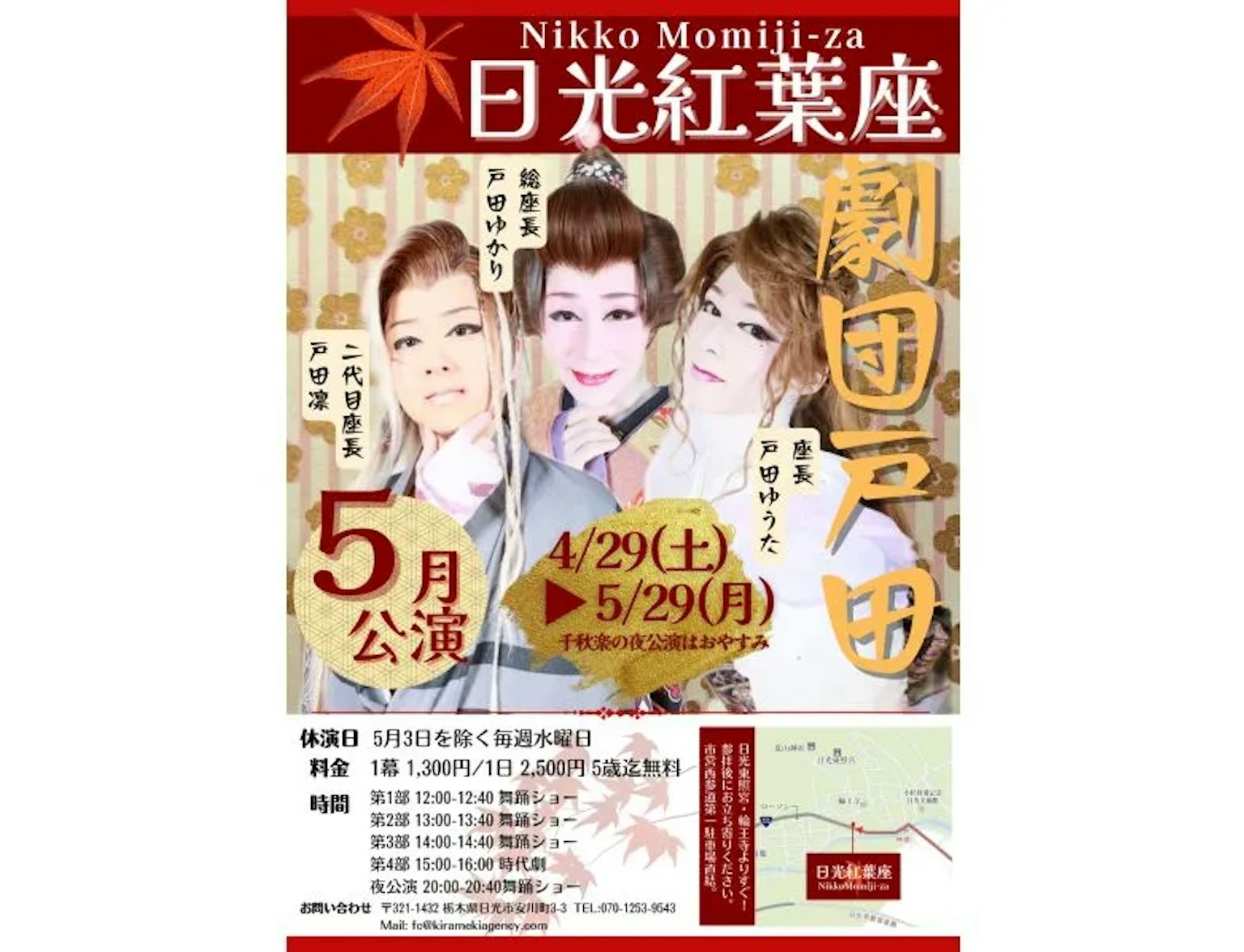
Experience the vibrant and colorful world of traditional Japanese theater with our tour to Nikko Koyoza.
Kabuki is often described as a family business, with acting skills and stage names passed down from generation to generation. Many famous Kabuki actors come from long-established acting families, inheriting their ancestors' techniques and traditions. This practice has helped preserve Kabuki's unique style and ensure its continuity over the centuries.
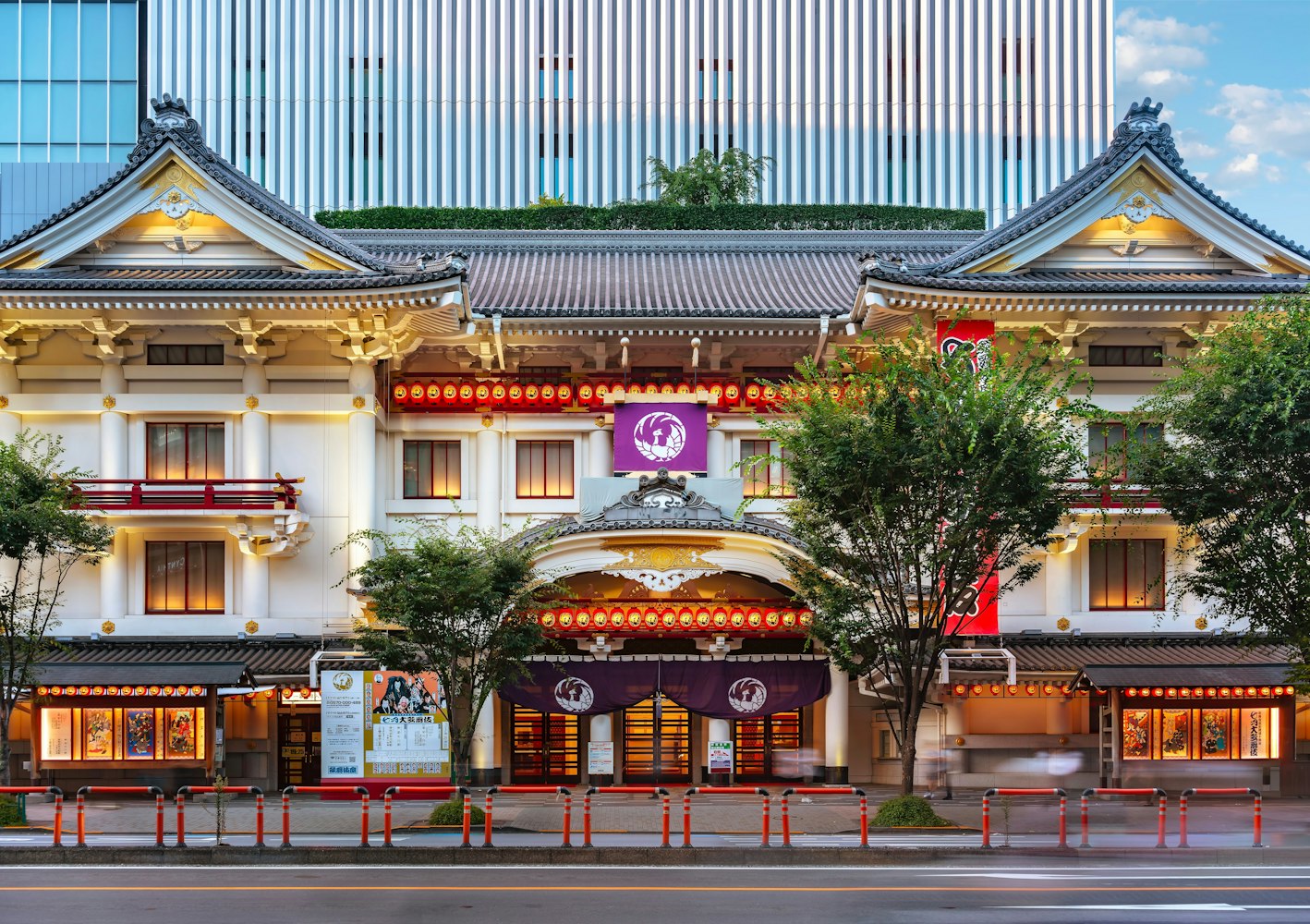
The tradition of passing downstage names is particularly significant in Kabuki. When an actor inherits a stage name, they also inherit the roles and reputation associated with that name. This creates a sense of continuity and connection to the past, reinforcing Kabuki's status as a living tradition.
In recognition of its cultural significance, Kabuki was added to UNESCO's Intangible Cultural Heritage list in 2005. This designation acknowledges Kabuki's importance as a traditional performing art that embodies Japan's history and culture.
The UNESCO recognition not only honors Kabuki's artistic achievements but also highlights the need to preserve and promote this unique art form for future generations. It's a testament to Kabuki's enduring appeal and its role in promoting cultural diversity and intercultural dialogue.
Kabuki is much more than a traditional Japanese drama; it's a captivating fusion of history, artistry, and culture. From the compelling acting styles of the Kabuki actors to the exquisite detail of characteristic stage makeup, every aspect of a Kabuki play promises to enchant and inspire. Whether you're drawn to the grandeur of major Kabuki theaters or the intricate choreography of a lively dance finale, there's no denying the allure that awaits within these hallowed halls.
But why just imagine it? With TriptoJapan, you can experience it for yourself! We offer a range of options to suit all tastes, from the most famous plays to contemporary events that blend traditional and realistic styles. And for those interested in exploring beyond kabuki, we also provide tickets to Noh plays and Bunraku performances.
So why wait? Embrace your curiosity, indulge your senses, and immerse yourself in the captivating world of kabuki. Visit our website today to book your ticket to a once-in-a-lifetime theatrical experience.
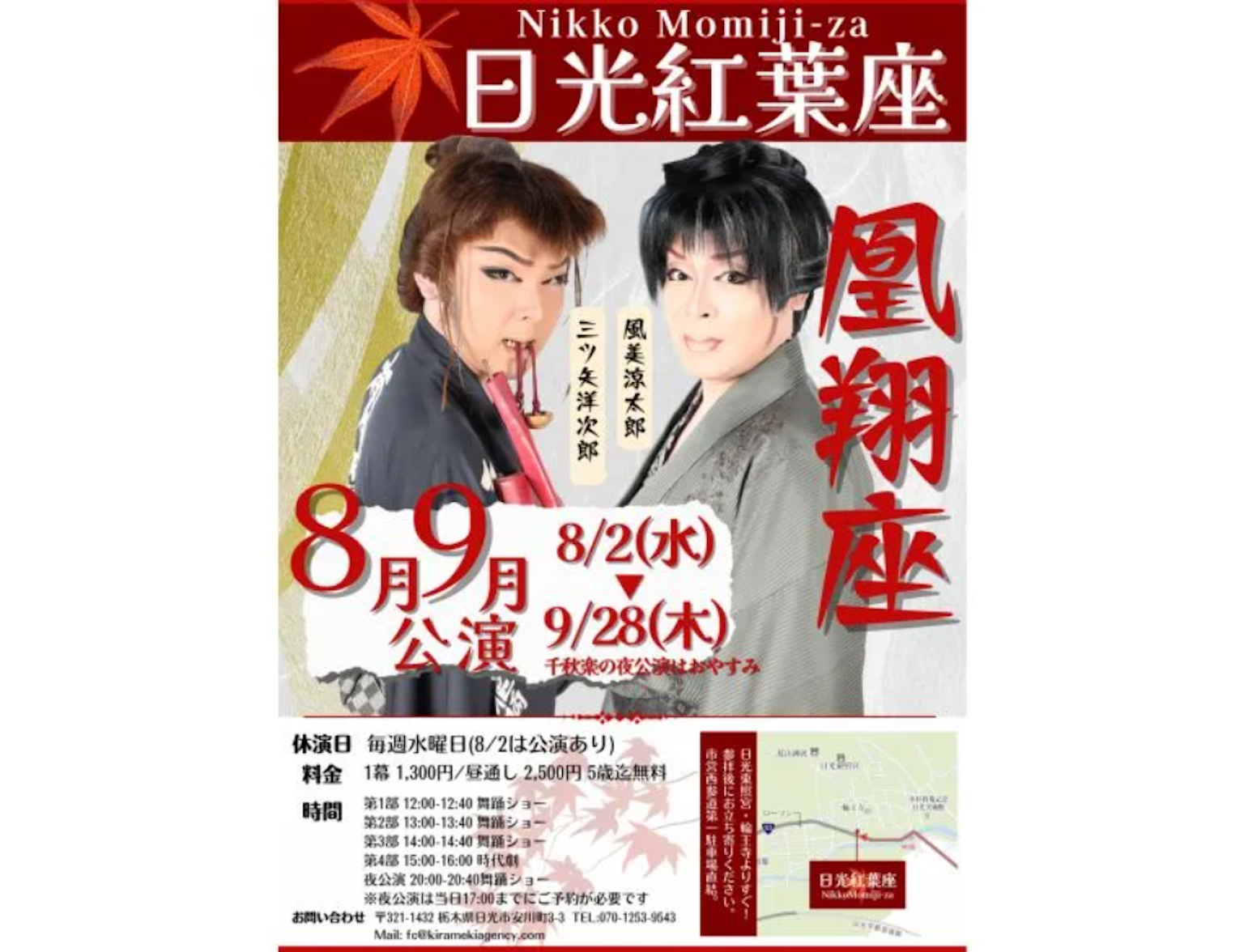
Dive into Nikko's vibrant cultural scene with the Koyoza Dance Show.



